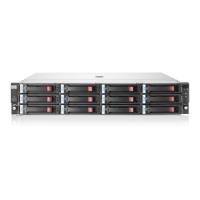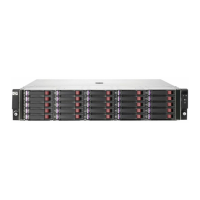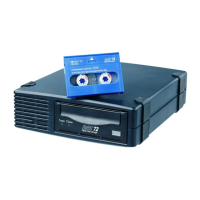• The HP entitlement order number for the HP D2D Replication license (found on the entitlement
certificate)
• The unique HP StoreOnce Backup System serial number (found on the label on the top of the
unit)
• Standard registration information, such as name and contact details
Online LTU retrieval is the recommended method for license redemption, but there is also a License
Key Request Form that you can submit by post or fax. If you choose to complete this form instead
of redeeming your license from the HP Licensing website, please be sure to include your HP
StoreOnce Backup System serial number on the form.
NOTE: The LTU is tied uniquely to the serial number of your HP D2D hardware. If your hardware
serial number changes (by swapping out the unit motherboard), the LTU must be transferred to the
new hardware via the HP Licensing website. A new LTU is generated, which must then be applied
and activated via the Web Management Interface on the repaired/replaced system.
Seeding the Target Appliance
All Replication status and configuration pages are available from the Replication tab on the Web
Management Interface. See the HP StoreOnce Backup System user guide for information about
using the Replication wizard to configure mappings to virtual tape devices and NAS shares.
Seeding the Replication Target Appliance
Data deduplication ensures that the amount of data to be replicated is minimized and the impact
on network traffic is negligible. However, the benefits of deduplication apply only after the first
full backup. The first synchronization of the files (NAS shares) or cartridges (virtual tape devices)
will require significant bandwidth. The same applies in reverse, if you need to recover data to a
Target from a Source. Therefore, there is an advantage to being able to accelerate the replication
of the first full backup. This process is known as seeding.
As part of the deployment strategy, it is important to decide how the first full backup will be seeded.
There are three main options:
• This option does not use seeding, instead we simply allow the first synchronization to take
place over the WAN. If required, you may choose to limit the bandwidth available for the
replication job from the Local Settings on the Web Management Interface, see the HP StoreOnce
Backup System user guide. This could take a very long time to complete and may not complete
before the next scheduled backup to the share or slot being replicated.
• If the Target Appliance is not yet in use, it may be possible to colocate the Source and Target
Appliances on the same site LAN to perform the initial replication locally on a high bandwidth
link and then ship the appliance to the Data Center.
• If the Target Appliance is already in use and you have configured NAS shares, you can seed
initial data onto a Non-Replicating Share, as described below, before you use the Web
Management Interface to configure the replication source and target.
Seeding NAS shares using a USB disk
You only need to seed with one full backup.
1. Host backs up to a Non Replicating NAS share on the Source Appliance.
2. Host maps to the NAS share on the HP StoreOnce Backup System and uses a file management
application (such as Windows Explorer) to locate files and copy them to a USB disk attached
to the host.
3. The USB disk is shipped to the Data Center.
4. A new share is created on the HP StoreOnce Backup System (using the Web Management
Interface).
Seeding the Target Appliance 29
